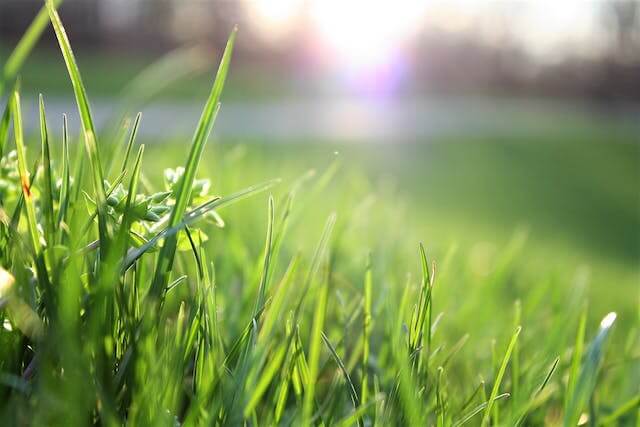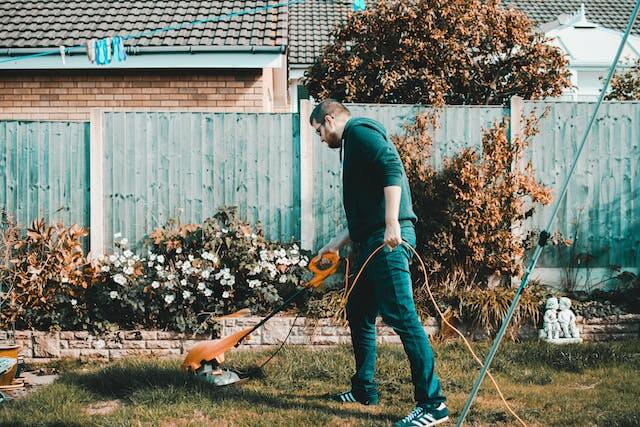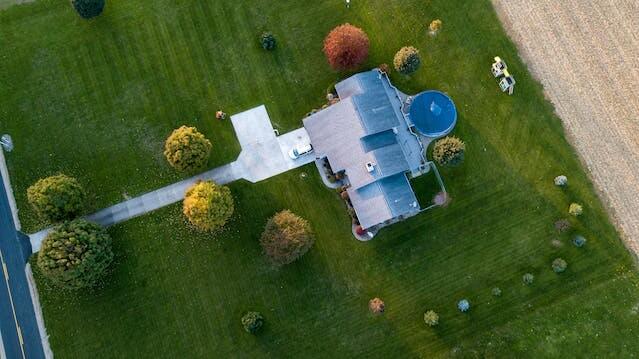Welcome to the guide on essential lawn care and pest control. A lush, healthy lawn is a source of pride for homeowners, but it can be vulnerable to various diseases. These ailments not only affect the appearance but also the overall health of your lawn. Understanding these issues is important for maintaining an outdoor space. Stay tuned as we explore effective strategies for treating common lawn diseases, ensuring your lawn stays healthy and appealing.
Understanding Why Identifying And Treating Common Lawn Diseases Is Important
Lawn diseases, primarily caused by fungi, can take root due to various factors. These include environmental conditions like humidity and temperature, along with lawn maintenance practices such as watering frequency and fertilization. Different fungi prefer different conditions; for example, high moisture levels coupled with warm temperatures can create an ideal breeding ground for certain pathogens.
Similarly, excessive fertilizer use or incorrect mowing techniques can weaken the grass, making it more susceptible to disease. As seasons change, preparing your lawn for cold weather and adapting your maintenance routine to ward off winter-related diseases become particularly important.

Key Symptoms
Early detection of lawn diseases hinges on recognizing key symptoms. Discoloration, such as brown or yellow patches, is a common indicator. Also, thinning grass or the presence of mold and mildew on the blades can signal an underlying problem. Other signs include irregularly shaped dead areas or spots on individual grass blades. Monitoring these symptoms is crucial, especially as you prepare your lawn for cold weather, which can exacerbate certain conditions. Regular inspection and prompt action can prevent these symptoms from escalating into more severe problems.
Common Lawn Diseases And Their Identification
Here Are The Top 3 Common Lawn Diseases:
- Brown Patch is easily identifiable by its large, circular patches of withered, brown grass. These patches often have a darker border, making them stand out against the healthy green of the surrounding lawn. This disease thrives in humid conditions, particularly during warm nights. It’s vital to ensure good air circulation around the affected areas and to avoid overwatering, as stagnant water can worsen the condition.
- Dollar Spot manifests as small, round, silver-dollar-sized spots across the lawn. This disease often attacks under-fertilized grass, leaving behind hourglass-shaped lesions on the blades. For identification, look for these spots in the early morning when dew is present, as they become more noticeable. Maintaining a balanced fertilization schedule is key to preventing Dollar Spot, as it strengthens the grass against such infections.
- Leaf Spot begins with small, dark spots on grass blades, which can eventually lead to a condition known as Melting Out, where the grass thins and dies. This progression is typically seen in the late spring and can be exacerbated by wet conditions. To identify Leaf Spot, inspect the blades for small, dark, water-soaked spots. Regular lawn hygiene, such as removing debris and dead leaves and proper fertilization, is critical in preventing these diseases.
Treating Common Lawn Diseases
Accurately diagnosing lawn diseases is as vital as selecting the appropriate service for specific needs; also, recognizing proper identification and treatment of lawn disease is important when buying a home.
For example, treating a fungal disease requires different approaches than handling nutrient deficiencies or pest infestations. Understanding the specific issue at hand is essential to ensure that the treatment addresses the symptoms and targets the underlying cause, leading to more sustainable and long-lasting results.

Treating Lawn Diseases Effectively
Cultural Control Methods
Implementing effective cultural practices is pivotal in preventing and managing lawn diseases. Key practices include appropriate watering, mowing at the right height, and regular soil aeration. Watering deeply and infrequently encourages robust root growth, which in turn fortifies the grass against diseases. Mowing should be done at a height that promotes the health of the grass without causing undue stress, as overly short grass can be more susceptible to disease. Additionally, aeration improves soil drainage and airflow, significantly reducing favorable conditions for fungal growth and other lawn diseases.
Chemical Treatments
When cultural methods are insufficient, treating common lawn diseases with chemical treatments, such as fungicides, becomes necessary. Selecting the right fungicide should be based on the specific disease being treated. Applying the treatment according to the manufacturer’s instructions is essential for effectiveness and safety. Wear protective gear and adhere to recommended application rates. Timings are important to protect both the user and the environment. These treatments should be applied judiciously to minimize environmental impact and avoid contributing to chemical resistance in pathogens.
Prevention Strategies
Regular Lawn Maintenance
A regular maintenance schedule that includes timely mowing, adequate watering, and appropriate fertilizing can greatly diminish the likelihood of lawn disease. This routine care keeps the lawn looking its best and strengthens it against potential diseases. A well-maintained lawn leads to a healthy lawn & healthy wallet, as it reduces the need for costly treatments and repairs.

Choosing The Right Grass
Opting for grass types that are naturally resistant to common diseases can drastically lower the incidence and severity of these problems. This approach fosters a healthier lawn environment and aligns with sustainable and cost-effective lawn management practices. When choosing disease-resistant varieties, homeowners can enjoy a lush, healthy lawn with reduced reliance on chemical treatments, thereby contributing to a healthier ecosystem and a lighter impact on their wallet.
Seasonal Moving And Lawn Health Tips
Seasonal shifts play a significant role in both the logistics of moving and the health of your lawn. Spring, in particular, is a crucial time for these aspects. It’s a season known for its popularity for moving to places like Kansas City, Missouri, as the pleasant weather facilitates easier relocation. Simultaneously, spring is when your lawn emerges from its dormant winter state and becomes susceptible to various common diseases.
As such, while you plan your move during this season, it’s essential not only to meticulously go over reviews of Kansas City movers and hire the best long-distance movers in Kansas City but also to prepare for the specific lawn care needs of your new home. A well-timed treatment plan for your lawn can prevent the onset of diseases like brown patches or dollar spots, which are prevalent in spring. This dual focus on a smooth moving experience and proactive lawn care will set the stage for a seamless transition into your new home and ensure that both your move and your lawn are well-managed and thriving.
Final Words
Identifying and treating common lawn diseases effectively is crucial for maintaining a healthy lawn. It involves a blend of accurate diagnosis, strategic cultural practices, and careful application of treatments. As discussed, regular lawn care and selecting disease-resistant grass types are pivotal in preventing these issues. We encourage you to apply these insights to keep your lawn in top condition. With dedication and the right approach, you can ensure your lawn remains a beautiful and healthy part of your home environment.
Be Sure To Check Out Some Of Our Services:
Lawn Aeration — Rodents — Mosquitoes — Ants — Lawn Seeding









